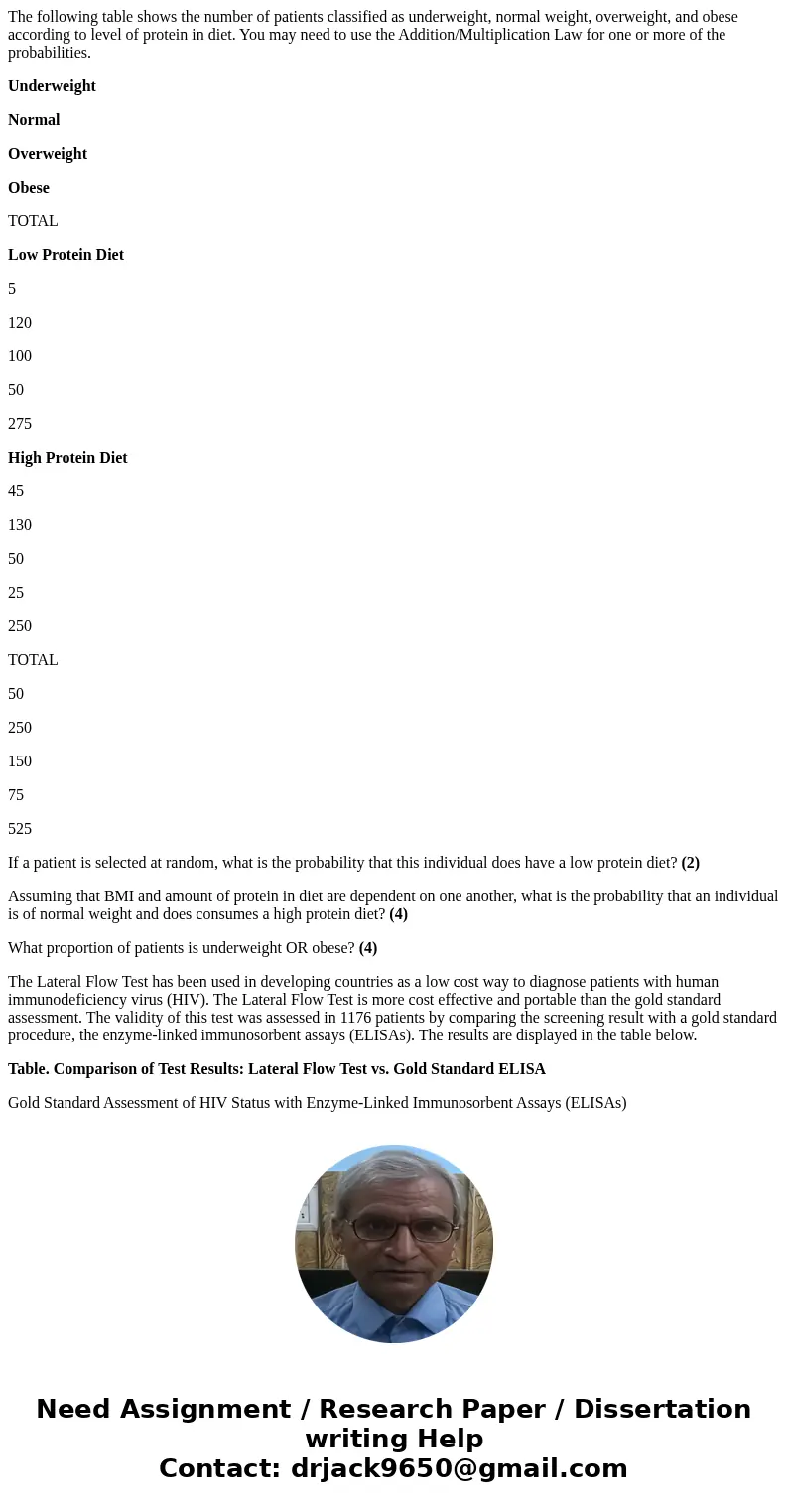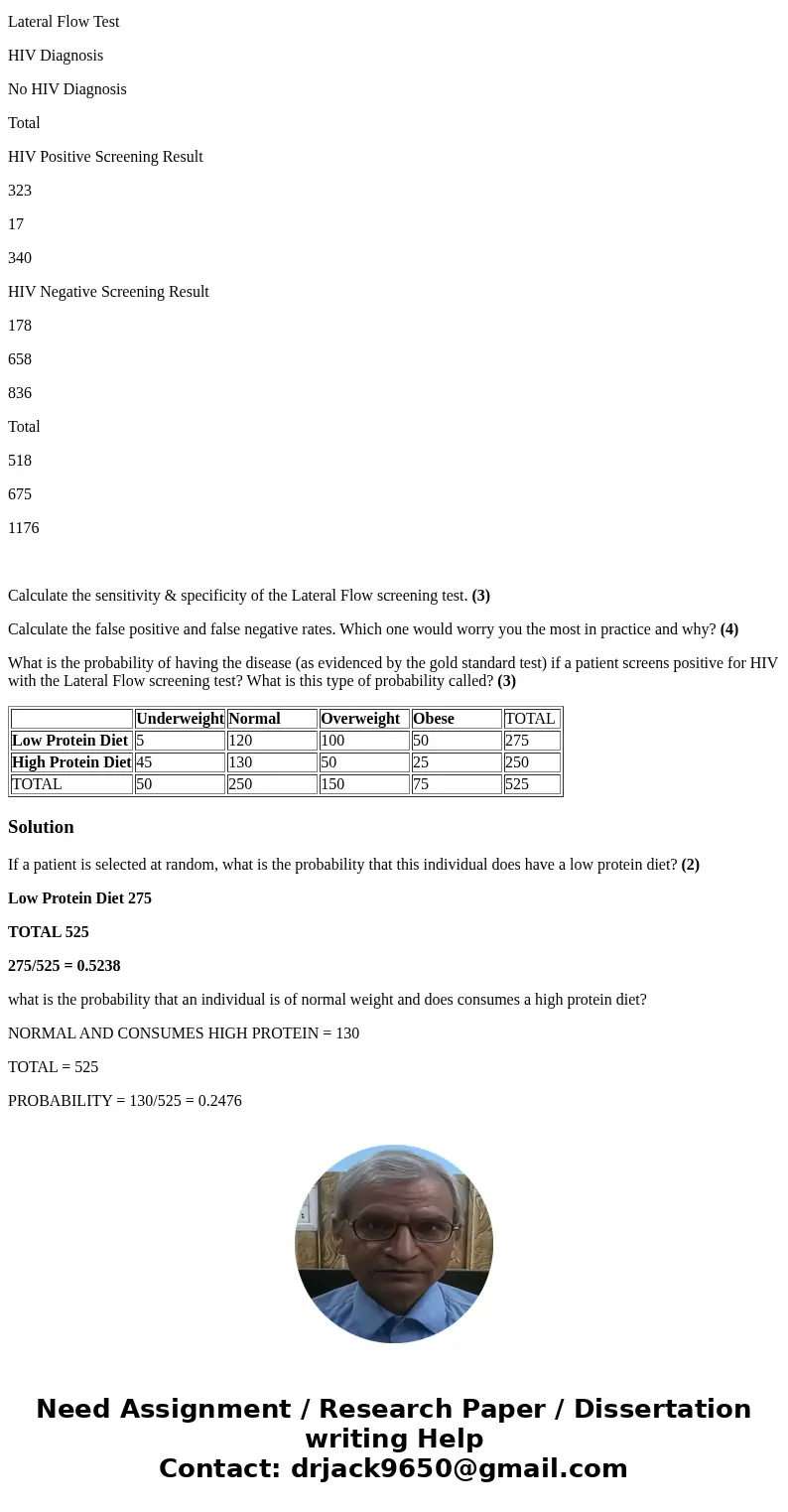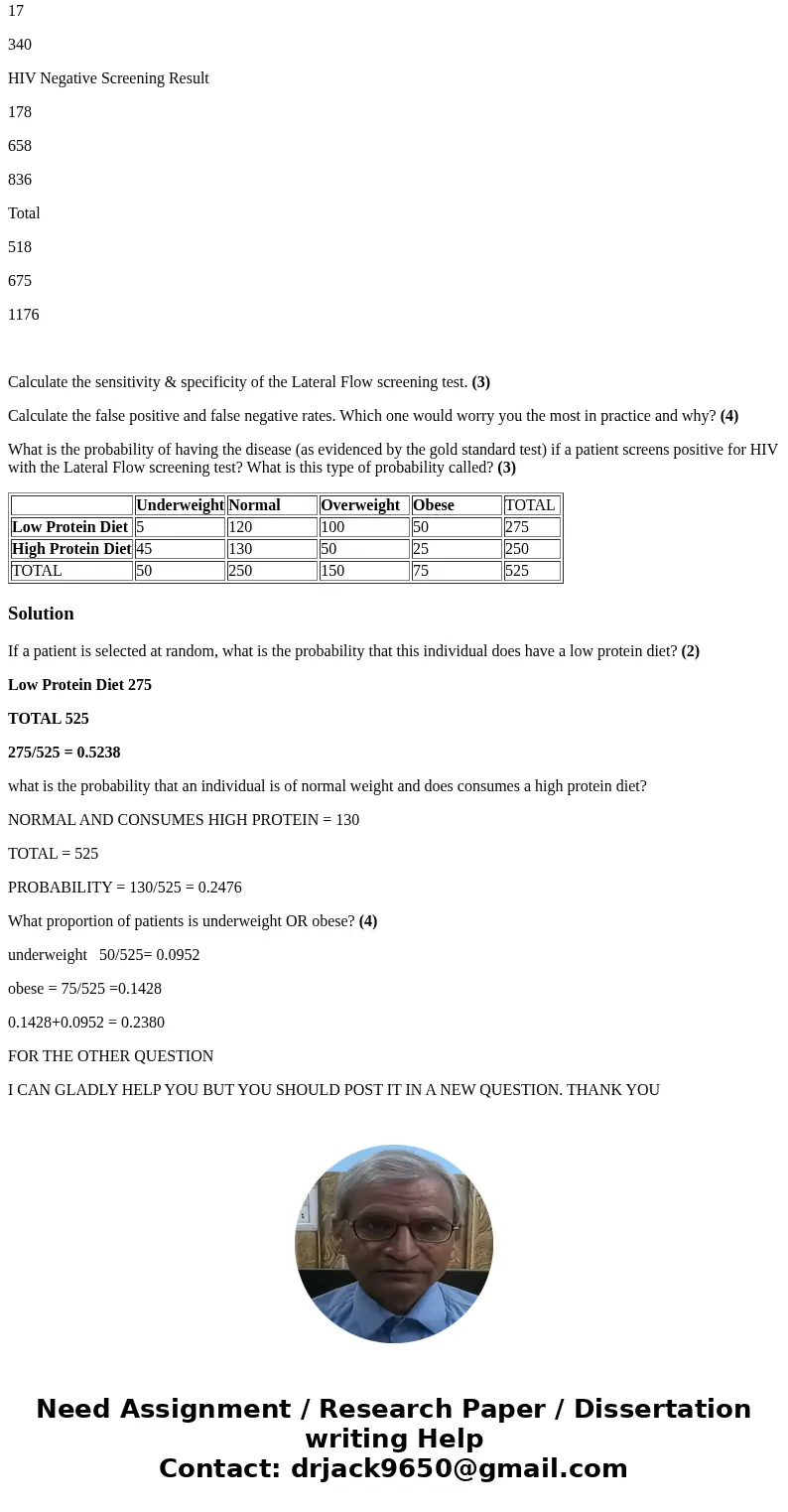The following table shows the number of patients classified
The following table shows the number of patients classified as underweight, normal weight, overweight, and obese according to level of protein in diet. You may need to use the Addition/Multiplication Law for one or more of the probabilities.
Underweight
Normal
Overweight
Obese
TOTAL
Low Protein Diet
5
120
100
50
275
High Protein Diet
45
130
50
25
250
TOTAL
50
250
150
75
525
If a patient is selected at random, what is the probability that this individual does have a low protein diet? (2)
Assuming that BMI and amount of protein in diet are dependent on one another, what is the probability that an individual is of normal weight and does consumes a high protein diet? (4)
What proportion of patients is underweight OR obese? (4)
The Lateral Flow Test has been used in developing countries as a low cost way to diagnose patients with human immunodeficiency virus (HIV). The Lateral Flow Test is more cost effective and portable than the gold standard assessment. The validity of this test was assessed in 1176 patients by comparing the screening result with a gold standard procedure, the enzyme-linked immunosorbent assays (ELISAs). The results are displayed in the table below.
Table. Comparison of Test Results: Lateral Flow Test vs. Gold Standard ELISA
Gold Standard Assessment of HIV Status with Enzyme-Linked Immunosorbent Assays (ELISAs)
Lateral Flow Test
HIV Diagnosis
No HIV Diagnosis
Total
HIV Positive Screening Result
323
17
340
HIV Negative Screening Result
178
658
836
Total
518
675
1176
Calculate the sensitivity & specificity of the Lateral Flow screening test. (3)
Calculate the false positive and false negative rates. Which one would worry you the most in practice and why? (4)
What is the probability of having the disease (as evidenced by the gold standard test) if a patient screens positive for HIV with the Lateral Flow screening test? What is this type of probability called? (3)
| Underweight | Normal | Overweight | Obese | TOTAL | |
| Low Protein Diet | 5 | 120 | 100 | 50 | 275 |
| High Protein Diet | 45 | 130 | 50 | 25 | 250 |
| TOTAL | 50 | 250 | 150 | 75 | 525 |
Solution
If a patient is selected at random, what is the probability that this individual does have a low protein diet? (2)
Low Protein Diet 275
TOTAL 525
275/525 = 0.5238
what is the probability that an individual is of normal weight and does consumes a high protein diet?
NORMAL AND CONSUMES HIGH PROTEIN = 130
TOTAL = 525
PROBABILITY = 130/525 = 0.2476
What proportion of patients is underweight OR obese? (4)
underweight 50/525= 0.0952
obese = 75/525 =0.1428
0.1428+0.0952 = 0.2380
FOR THE OTHER QUESTION
I CAN GLADLY HELP YOU BUT YOU SHOULD POST IT IN A NEW QUESTION. THANK YOU



 Homework Sourse
Homework Sourse